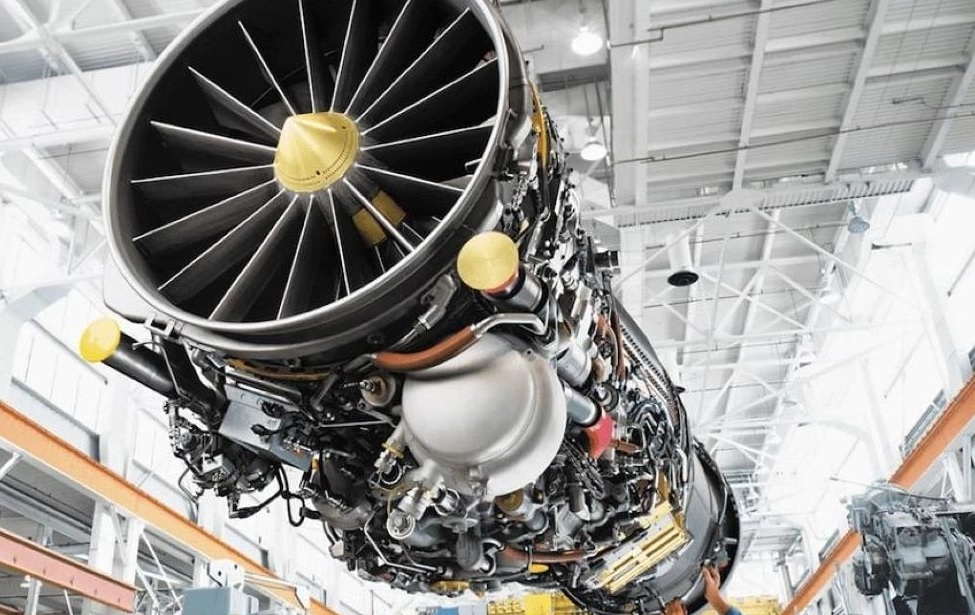GE Points to Korean Firm’s Shutdown for Delays in F-404 Engine Delivery for India’s Tejas Mk1A Fighter Jet

General Electric Aerospace has recently acknowledged that delays in delivering key components for its F404-GE-102 turbofan engines, which power India’s Tejas Mk1A fighter jets, are due to supply chain issues with a South Korean firm. This unexpected disruption affects the timeline for the Indian Air Force’s Tejas Mk1A fleet, a pivotal component of its modernization strategy. The F404 engine, essential for the light combat aircraft, is now facing delays that could ripple across India’s defense planning.
Understanding the F404-GE-102 Engine and Its Role
The F404-GE-102 turbofan engine is an advanced variant of GE’s F404 line, specifically designed to offer high performance with reliability and fuel efficiency. Originally powering platforms like the U.S. Navy’s F/A-18 Hornet, this engine’s technology has been adapted to the Tejas Mk1A, offering it a thrust output of around 17,700 pounds and enhancing its capabilities for air superiority missions. Its light weight and responsive performance are integral to the Tejas Mk1A’s agility, making it an ideal fit for India’s lightweight, single-engine fighter jet.
In South Korea, the F404 engine also powers the T-50 Golden Eagle, a trainer aircraft developed in collaboration with Korea Aerospace Industries (KAI) and Lockheed Martin. Korean companies have been assembling these engines under license since 2016 and have manufactured specific parts domestically, meeting high-quality standards set by GE. However, due to recent economic strains, one of the South Korean firms involved in producing these essential engine components went bankrupt, creating a critical gap in the supply chain.
The Impact of Korean Supplier Shutdown on Tejas Production
Though GE has refrained from naming the affected South Korean firm, this setback in the supply chain is far-reaching. As India’s fighter jet program leans heavily on the timely delivery of these engines, any production delays could disrupt Tejas Mk1A’s induction timeline. This delay is of concern not only because the Tejas Mk1A is central to India’s current air defense upgrades but also because the Indian Air Force has committed to a large order of these aircraft to replace aging jets and meet strategic defense goals.
The situation also has broader implications for GE, which has maintained a strong partnership with India through its engine programs. The Indian Air Force and GE are reportedly working together to identify alternative suppliers or expedite the production process to prevent prolonged delays. But, as global supply chains face increased vulnerabilities, this disruption highlights the risk of dependence on specific suppliers within such a complex defense manufacturing ecosystem.
The Strategic Importance of Tejas Mk1A
India’s Tejas Mk1A, with its advanced avionics, active electronically scanned array (AESA) radar, and beyond-visual-range missile capability, has been designed to be a frontline fighter for the Indian Air Force. With the inclusion of the F404-GE-102 engine, the Mk1A is expected to deliver optimal performance in high-stress environments. The program's progress is critical to replacing India’s aging fleet of MiG-21s and bridging the gap until the next-generation indigenous fighter, the Advanced Medium Combat Aircraft (AMCA), is fully operational.
Future Pathways and Mitigations
In light of this supply chain hiccup, the Indian Air Force and GE are exploring ways to offset potential delays, including searching for alternate suppliers and adjusting delivery schedules. While a resolution to the immediate problem may be forthcoming, the long-term repercussions on timelines and trust in the existing supply chain remain a challenge for both India and GE.
This incident also serves as a reminder for India’s defense planners about the risks associated with international dependencies, especially as India aims to strengthen its indigenous defense capabilities under the "Make in India" initiative.


